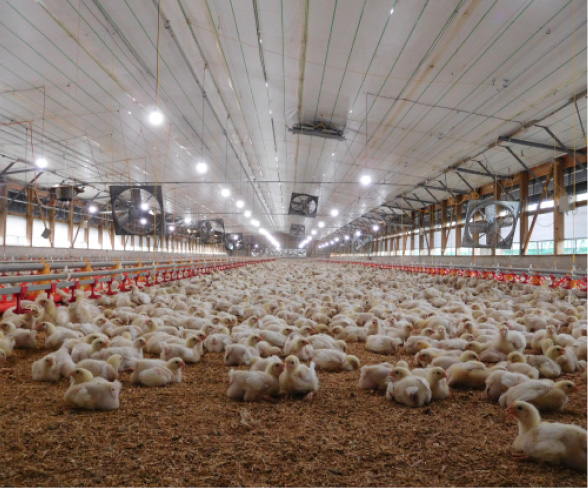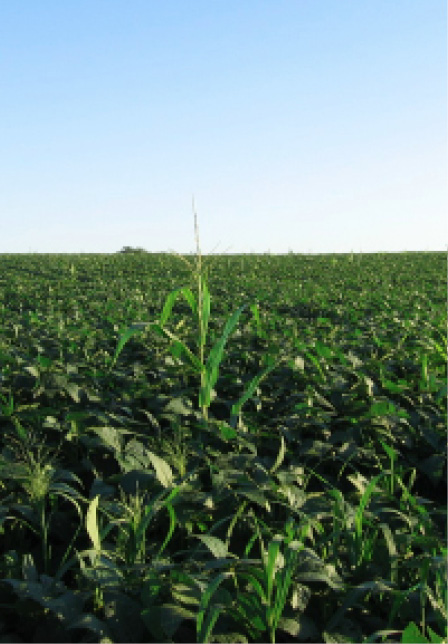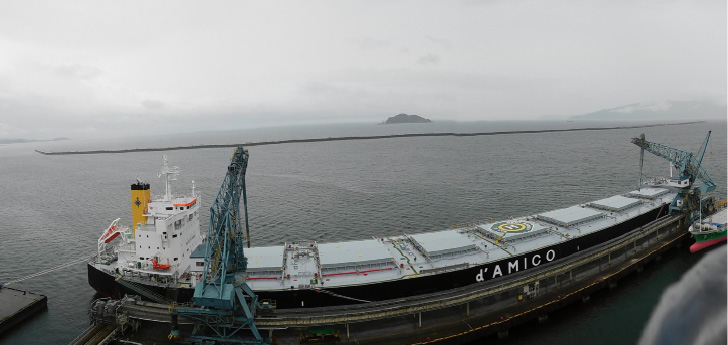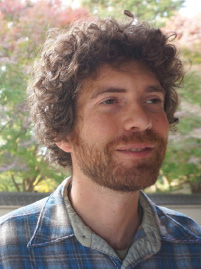Before my third-year at Grinnell College, I spent the summer of 2006 studying everything I could about corn in Iowa. After two years of living in Iowa, I was familiar with its rolling fields. This familiarity, however, did not mean that I understood corn any better than when I first arrived from the Pacific Northwest. I knew corn like I’d known the Columbia River - as a nearby thing that changed with the seasons. In the bustle of daily life, we know lots of things through proximity without ever digging into their complex ecologies and economies.
As economies grow increasingly interconnected and reliant on each other, the connections also grow so complex that they prove harder to understand. Iowa’s cornfields fit into global industrial food systems like a heart that circulates corn and capital upstream and downstream to disparate locations around the world. Corn’s prominence within global food systems also attracts outside investors to Iowa’s cornfields.
When I think about food systems on such a massive scale, I’m inclined to turn towards similarly massive concepts and categories. Into my head pops ideas like the Anthropocene, the corporate food regime, food sovereignty, alternative food networks, political ecology, sustainability, resilience, and justice. These ideas help me to make sense of the tumult that I encounter in food systems. But for those who are privileged enough to spend time researching about agriculture and food, we also have so much to learn by talking to people, listening to them with care, and getting to know a place.
My first significant encounter with researching food took place in Grinnell over the summer of 2006, a chance that provided the foundation for my career as a critical food scholar. The sprawling 50-page output from that research, “The Failure of Economic Authority,” is still hosted on grinnell.edu servers. Over that summer, my mentor was Dr. Jonathan Andelson, the long-serving Director of the Center for Prairie Studies and Publisher of Rootstalk. In this essay, I’ll share about my experiences of researching aspects of corn in Iowa and beyond to Hawai’i and Japan.
Researching Corn in Iowa
I’m embarrassed to go back and listen to my initial interviews with Iowa corn farmers. I had a list of questions and bulldozed through them. “What brought you to farming?” “When did your family acquire the land you farm?” “How old are you?” The corn farmers whom I spoke with generously answered these questions, but their answers begged for follow-up questions and more space to talk. Instead, I marched on like a miner bent on mapping a cave but oblivious to the half-revealed gems I hurried past.
Despite its flaws, my reliance on a set of questions to compare between farms provided an anchor for me as I naively waded out into the bewildering world of corn. At times, I sounded like a farmer fanboy excited to speak with someone who wakes up early, drives a tractor, and handles large animals. In interviews, I exclaimed “Wow!” so often that I eventually stopped transcribing it.
Here’s part of an early interview with a corn farmer from June 2006:
Ben: So once you harvested your corn what did you do with it?
Farmer: Well, I generally store it and then sell it later. Lots of times I have my grains sold before I plant it. It’ll be for December or January or March delivery, and I have always had enough storage for my crop because I don’t like to wait in line to go to the elevator. And once you have it in the elevator your options are limited. You almost have to sell it through them. You don’t have the flexibility of selling to some other processor. See, when you sell crops early you still have the option of buying that contract back and doing something different with it. If you have the grain stored at an elevator you don’t have that option without it costing you a lot of money.
Ben: Wow. I’ve never heard that about grain elevators.
Farmer: The board of trade, are you familiar with that?
Ben: No.
Farmer: So the commodities, any of your grains or livestock, can be sold two years in advance.
Ben: Wow.

Photo courtesy of Benjamin Schrager. View from inside an industrial broiler chicken structure, Miyazaki Prefecture, Japan
As much as I cringe to read this transcript, a lot of good things were happening. Foremost, I was honest about my ignorance, and the farmer graciously responded by heaping bushels of knowledge on me. As a result, I learned a lot. Once I became more familiar with the basics of corn farming, I could fumble my way towards better questions like, “How do you decide what type of seeds to use?” By the end of the summer, I could hold a decent conversation with a corn farmer. No small feat.
Some aspects of corn farming are boring. For example, subsidies are akin to taxes, but I still persisted in asking farmers about subsidies. Rather than trying to explain this tedious paperwork to me, one farmer provided the mental shortcut he uses: subsidies basically provide him with an additional $20 per acre of corn. Little by little, I gained an incomplete but working understanding of the key forces shaping Iowa’s cornfields.
The number of corn farmers in Iowa continues to decrease as the remaining farms grow in size. This trend is generally true not just for Iowa corn farmers but for all conventional agricultural industries in capitalist economies. Farms decrease and the remaining farms grow increasingly massive. Scholars often explain these trends as aspects of larger concepts such as neoliberalism, financialization, and the corporate food regime.

Photo Courtesy of Benjamin Schrager, 2006. Picture of a lone corn plant, possibly Round-up resistant, in a field of soybeans in Iowa
Today, most Americans accept tenets of “productionism,” the idea that farmers should increase production to feed the world, but this idea was anything but commonsense in 1930. Back during the Great Depression, poverty was of far greater concern. If farmers produced too much then they undermined the value of their products. These fears of overproduction abated in 1933 when the Roosevelt administration enacted price support subsidies for grains like corn and soybeans. Under this new policy, Iowa emerged as a proving ground for unrestrained production, and hybrid corn starred as a key catalyst.
Iowa corn farmers have a special connection to capital-intensive agriculture, because hybrid corn first took hold in Iowa. Before hybrid corn, most farmers saved seed from their “open-pollinated” corn to replant the following year. Although some companies sold open-pollinated corn seeds, it wasn’t a big business. In the mid-1930s, crop scientists in Iowa made “hybrid” corn available to the state’s farmers for a nominal fee. Compared to open-pollinated corn, hybrid corn is uniform, higher-yielding, and more receptive to synthetic fertilizer. By 1940, most farmers in Iowa used hybrid corn. From Iowa, hybrid corn spread to the rest of the US and eventually the world. Hybrid corn proved to be the key that enabled some corn farms to grow massive and gobble up surrounding farmland.
Statistics from the agricultural census reflect these trends. In 1935, Iowa had 200,000 corn farmers cultivating nearly 10 million acres. Four decades later in 1978, the number of farms halved to 104,000, but the area cultivated increased by 3.4 million acres (34 percent). Tack on another four decades to reach 2007, and the number of Iowa corn farms halved again, dropping to 50,000. Between 1935 and 2017, the average acreage harvested by a corn farm in Iowa increased six times over from 49 acres to 295 acres.
Perhaps no agricultural technology has been as divisive as genetically modified (GM) seeds. In the late 1990s, seed corporations introduced genetically modified corn, and when I researched Iowa corn farmers in 2006, stacked trait GM corn had recently become available. By stacking traits, GM corn could be modified not just to produce its own Bacillus thuringiensis (Bt) insecticide but also to resist Monsanto’s glyphosate herbicide, otherwise known as Round-up. Seed corporations like Monsanto and Pioneer acquired smaller competitors and launched an arms race for a competitive advantage that continues to this day. Eventually, Monsanto and Pioneer were subsumed by still larger corporations. Regardless of the controversy, 95% of the corn grown in Iowa is genetically modified.
My research in the summer of 2006 occurred amidst a steady trend towards more industrial-style corn and soybean production. As much as corn and soybeans saturate Iowa, the number of people who toil in these fields continues to dwindle. With corn and soybean production occurring increasingly on a massive scale, a divide deepens between those who are too familiar with corn economies and consumers who grow increasingly alienated from food. Thanks to the generosity of corn farmers with whom I spoke during the summer of 2006, I gained insights into the dynamics they face. Thorny questions about corn farming, rural communities, and Grinnell College’s role in this mix — all without easy answers — still needle me to this day.
Although seed corporations control a staggering share of the global market, I encountered glimmers of resistance from people who understood the idea of productionism but stood firmly for other approaches. Practical Farmers of Iowa remains an organization that seeks to balance farm incomes with better social and environmental outcomes. In Wisconsin, the Mandaamin Institute endeavors to introduce corn varieties better suited to sustainable farming. Many of the farmers I interviewed rejected the industrial model and developed their own practices based on local knowledge and experiences.
Upstream to Hawai’i, then downstream to Japan
My research on Iowa corn farmers gave me an abiding interest in seeds that enabled my next forays into the dizzying labyrinth of corn’s economies to take me upstream of Iowa’s cornfields to Hawai’i’s seed corn industries and downstream to Japan’s livestock industries. Despite having never taken a geography course at Grinnell College, human geography emerged as the best fit for me to continue exploring the intersections between place, ecology, and culture. In Fall 2011, I enrolled in the University of Hawai’i at Mānoa’s graduate program in geography.
As a budding researcher, I serendipitously transitioned from Iowa, the epicenter of global corn production, to Hawai’i, the epicenter of global seed corn production. Heeding the advice of prescient mentors, I adapted to this opportunity and studied Hawai’i’s seed corn industry for my MA thesis. At the time, the seed corn industry was one of the most controversial issues in the state. Much of this controversy centered on disputes over the safety of GM seeds and agrochemicals. Instead of focusing on these scientific disputes, I explored the economic and geographic factors that caused the seed corn industry to grow in Hawai’i. Doing so required me to delve into crop breeding by interviewing industry insiders. This research enabled me to explain the process of seed corn improvement and how innovations such as Marker Assisted Selection changed Hawaii’s role within seed corporation’s R&D strategies.
After my MA thesis, which explored corn-breeding upstream of Iowa corn farmers, I turned downstream to Japan. I know that in this essay Japan seems a surprising transition, but among other experiences I lived in Kobe with my family when I was twelve, studied abroad at Sophia University in Tokyo while enrolled at Grinnell, and attended a Japanese language school called IUC in Yokohama as a part of my UH Mānoa graduate program. For my PhD, I received funding from the Crown Prince Akihito Scholarship Foundation that supported two years of ethnographic research based in Miyazaki Prefecture in Southern Kyushu, a major producer of both industrial broiler chicken and artisan “jidori” chicken.
For Japan’s agricultural industries, rice generates the most revenue, but the next five top sources of agricultural revenue come from animal industries that rely on imported grains: dairy, beef, pork, chicken eggs, and chicken meat. The precise route through which corn might travel upstream from Hawai’i to Iowa and then downstream to Japan is fuzzy. It’s hard to know how much corn from Iowa is directly exported to Japan. That fuzziness is characteristic of international agricultural commodity markets, but even if we are limiting our focus to markets, Iowa still influences animal industries in Japan, because Iowa is such an important part of global corn markets.

Large grain barge in Shibushi harbor, Kagoshima Prefecture, Japan. Photo Courtesy of Benjamin Schrager.
My PhD dissertation explored the industrialization of Japan’s chicken production, the emergence of a category of artisan heirloom chicken called jidori, the role of avian influenza in tightening biosecurity restrictions, and the high-risk practice of eating raw chicken. I also created a YouTube video series that shared stories about jidori farms and restaurants from Miyazaki Prefecture with the broader public. Drawing insights from these different aspects of chicken meat, my dissertation considered how social trust and anxiety respond to the growing chasm between upstream conditions of production and downstream consumer practices.
After completing my PhD, I received a postdoctoral fellowship from the Japanese Society for the Promotion of Science to research local food and rural revitalization initiatives while based at Kyoto University. Even though Covid-19 upended my research plans, I could still work on whipping my data into article-shape and then cajoling the proto-articles through the peer-review process.
I’ve shared links to some of my published work here - my happy successes - but I’ve endured far more letters of rejection than acceptance. This is typical, especially for early-career academics. Key ingredients for my publication record include that I learned to persist through the peer-review process, conducted original research, and engaged with ongoing scholarly debates. I was also lucky that I received funding for my graduate and post-graduate positions and enjoyed supportive communities along the way, communities like the East-West Center in Hawai’i. This support allowed me to focus on the journey of research and learning while mostly avoiding the ominous maw of the academic job market.
Even with my language ability and research experience, I count myself very fortunate to have landed an academic position in Japan. I became an Assistant Professor at Utsunomiya University in the School of Agriculture’s Department of Agricultural Economics in October 2021. This position should provide me with a long-term base to teach and research about food systems in Japan and beyond. I hope that before too long I have a chance to return to Grinnell and share some of what I’ve learned and see how the school, farmers, and cornfields continue to change.


